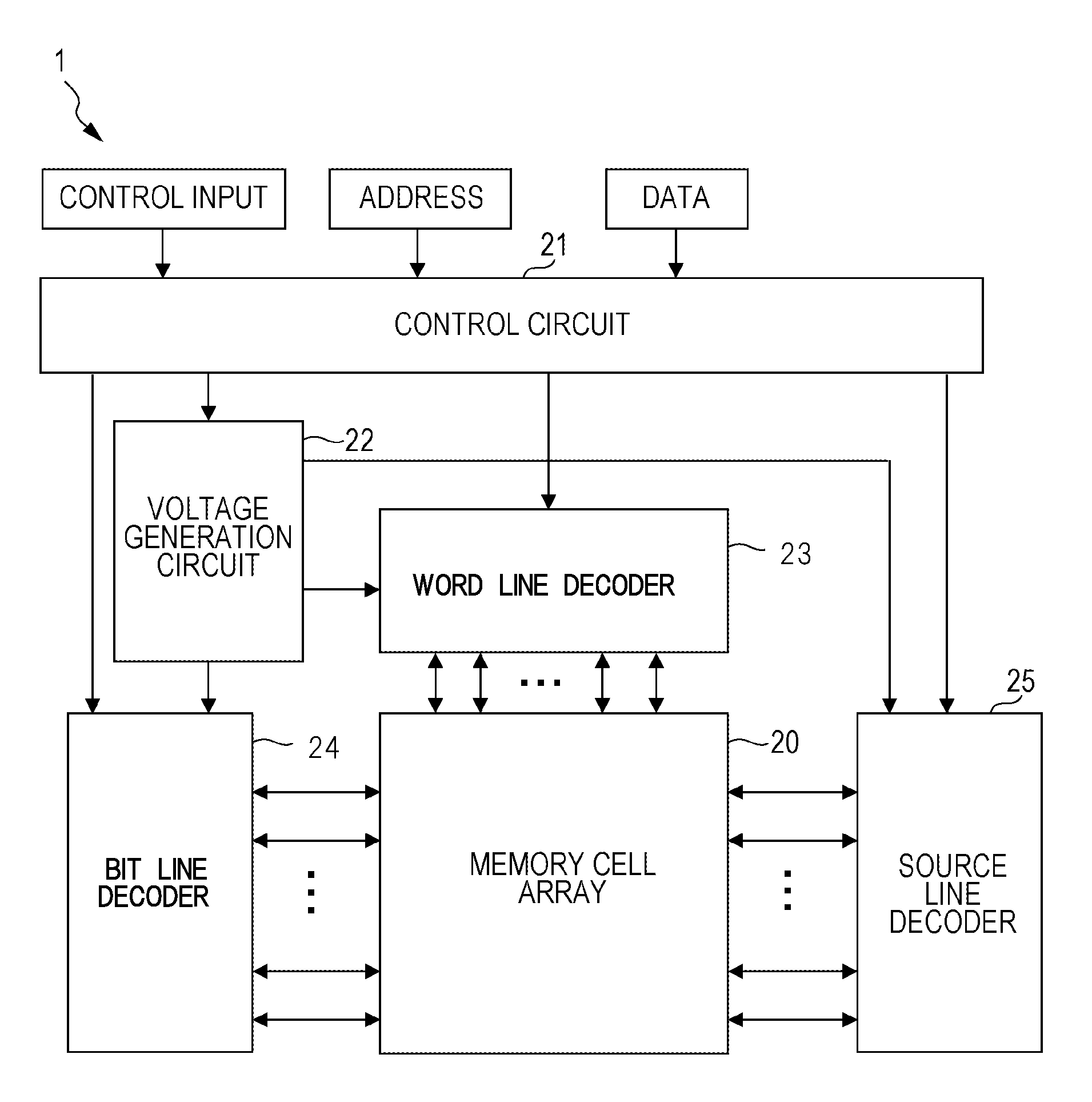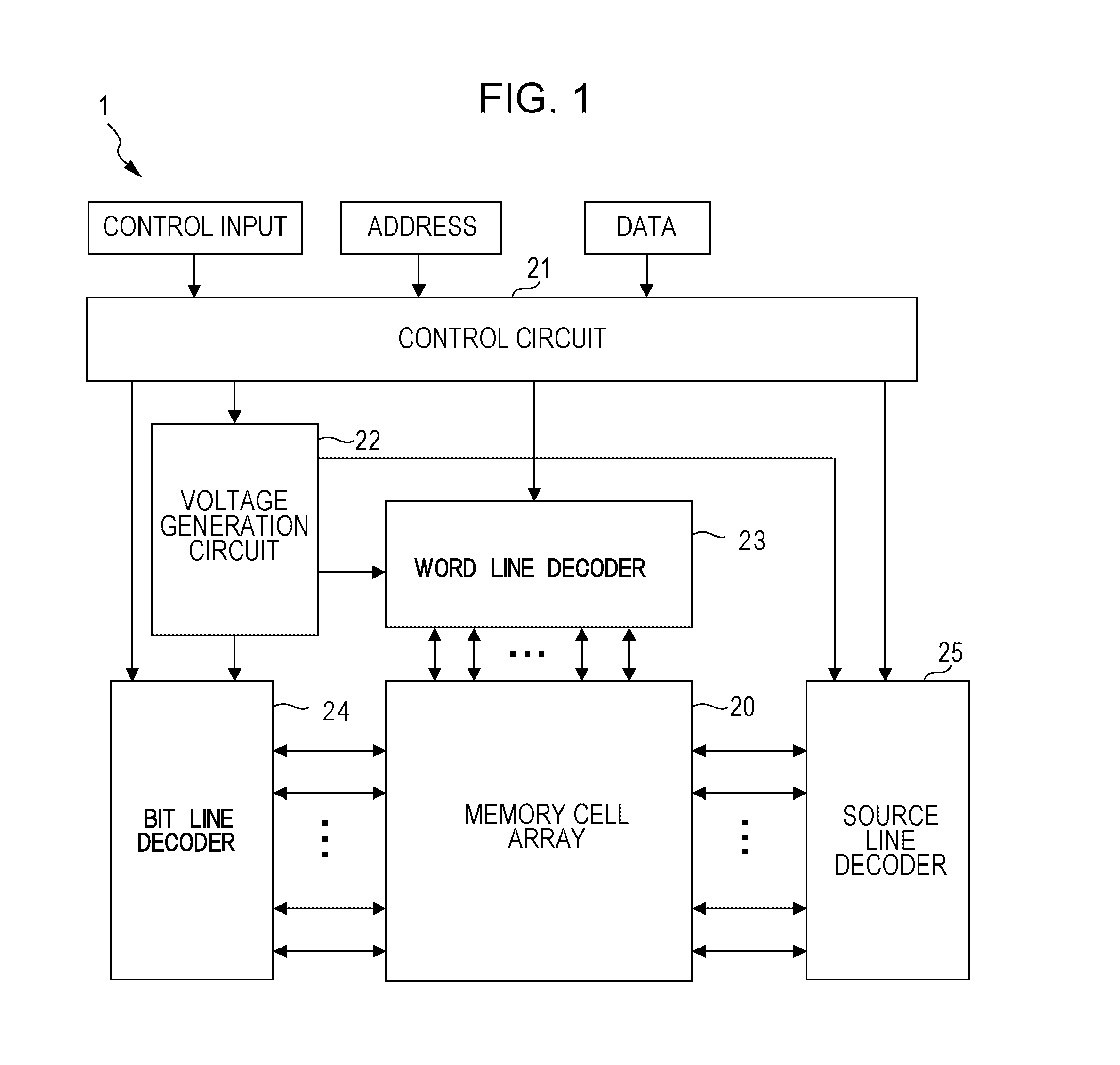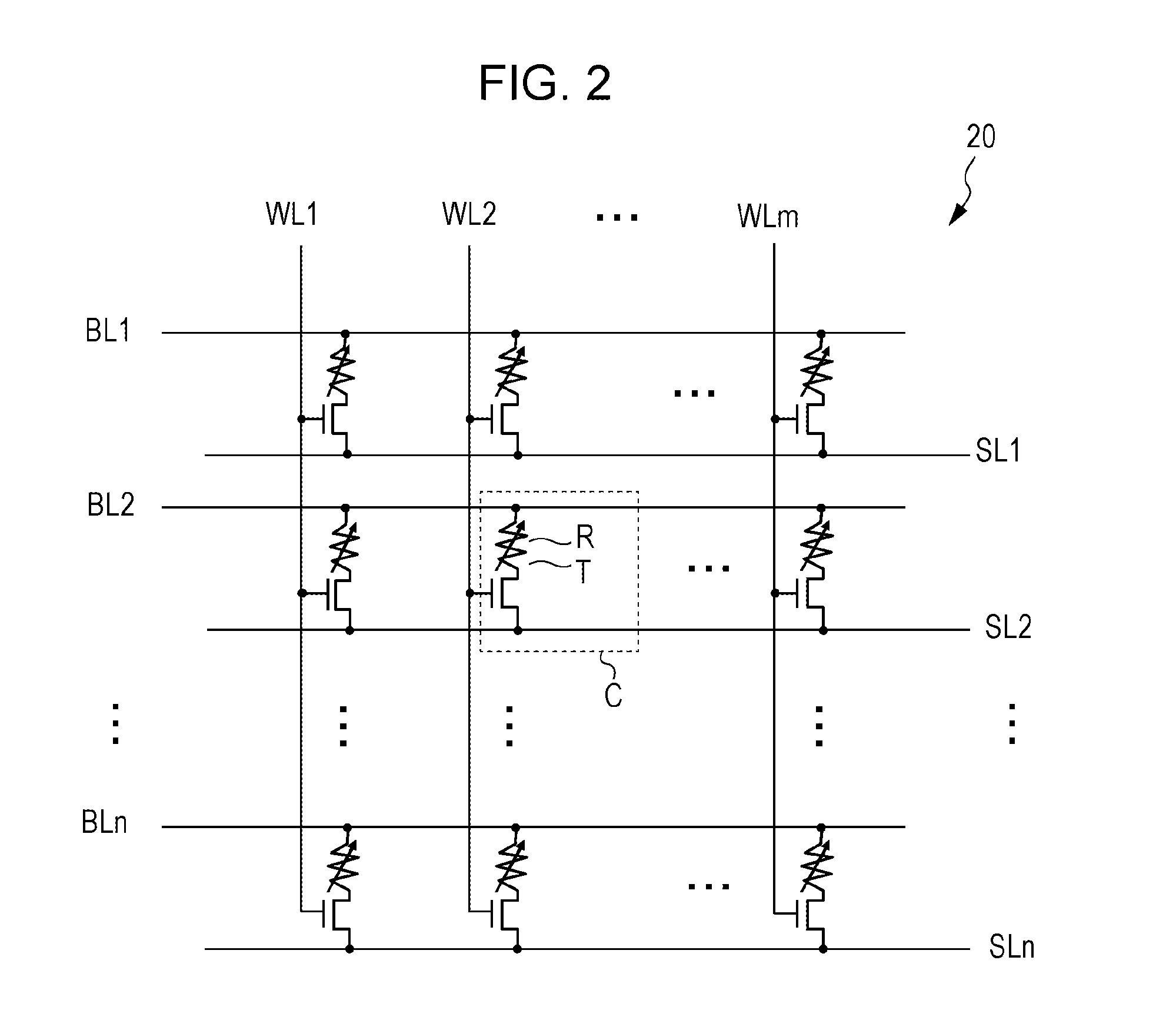Semiconductor memory device
a memory device and semiconductor technology, applied in information storage, static storage, digital storage, etc., can solve the problems of generating oxygen defects in the filament path, impaired reading sensitivity, and difficulty in reading, and achieve the effect of not reducing the rewriting operation speed
- Summary
- Abstract
- Description
- Claims
- Application Information
AI Technical Summary
Benefits of technology
Problems solved by technology
Method used
Image
Examples
first embodiment
[0047]FIG. 1 illustrates a circuit block diagram illustrating a schematic configuration of a semiconductor memory device according to an embodiment of the present invention. Referring to FIG. 1, a semiconductor memory device 1 includes a memory cell array 20, a control circuit 21, a voltage generation circuit 22, a word line decoder 23, a bit line decoder 24, and a source line decoder 25.
[0048]FIG. 2 illustrates an example of a circuit configuration of the memory cell array 20. As illustrated in FIG. 2, the memory cell array 20 has a plurality of memory cells C arranged in row and column directions. Each of the memory cells C has a pair of input and output terminals (hereinafter referred to as an “input-output terminal pair”) in which a variable resistance element R and a selection transistor T are connected in series. In the respective memory cells C, first ends on the variable resistance element R side of the input-output terminal pairs are connected to a plurality of bit lines BL...
second embodiment
[0076]In the first embodiment, a description has been given of a method for reducing the time required for the set operation per memory cell by executing the set operation by applying a set voltage pulse to a selected memory cell for a long time while the set voltage pulse is applied simultaneously to a plurality of selected memory cells, thereby substantially reducing the time required for rewriting. It is still more preferable that the time during which the set voltage pulse is applied be shorter.
[0077]As the time during which the set voltage pulse is applied is reduced, however, the resistance value of a variable resistance element after the set operation is deviated from the low-resistance range, and the number of elements for which the set operation has failed increases.
[0078]The duration of the set operation may be reduced by, after the set operation, reading the resistance states of the variable resistance elements of selected memory cells and performing the set operation aga...
third embodiment
[0085]In the semiconductor memory device 1, the memory cell array 20 may include a plurality of banks. FIG. 6 illustrates an example of a semiconductor memory device configured such that a memory cell array includes a plurality of banks. Referring to FIG. 6, a semiconductor memory device 2 includes a memory cell array 20 that is divided into four banks 20a to 20d. Each of the banks 20a to 20d corresponds to the memory cell array 20 of the semiconductor memory device 1, and a plurality of memory cells arranged in a matrix are connected through the word lines WL1 to WLm, the bit lines BL1 to BLn, and the source lines SL1 to SLn. Similarly to the semiconductor memory device 1, the semiconductor memory device 2 includes a control circuit 21, a voltage generation circuit 22 (not illustrated), word line decoders 23, bit line decoders 24, and source line decoders 25. In FIG. 6, for the sake of simplicity, a set of decoders including each of the word line decoders 23, each of the bit line d...
PUM
 Login to View More
Login to View More Abstract
Description
Claims
Application Information
 Login to View More
Login to View More - R&D
- Intellectual Property
- Life Sciences
- Materials
- Tech Scout
- Unparalleled Data Quality
- Higher Quality Content
- 60% Fewer Hallucinations
Browse by: Latest US Patents, China's latest patents, Technical Efficacy Thesaurus, Application Domain, Technology Topic, Popular Technical Reports.
© 2025 PatSnap. All rights reserved.Legal|Privacy policy|Modern Slavery Act Transparency Statement|Sitemap|About US| Contact US: help@patsnap.com



